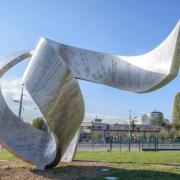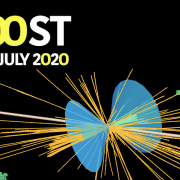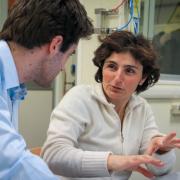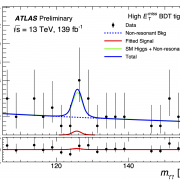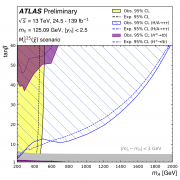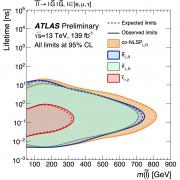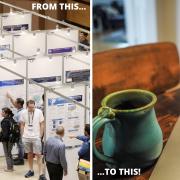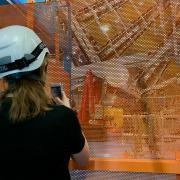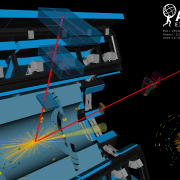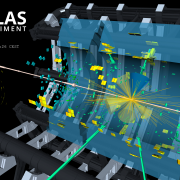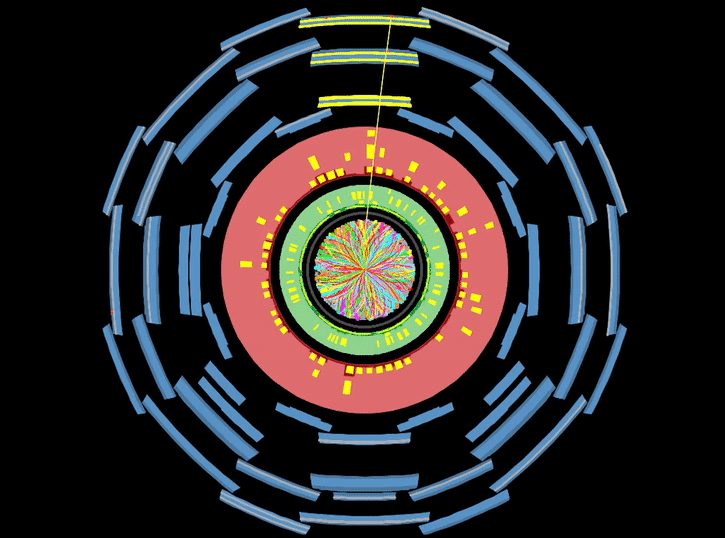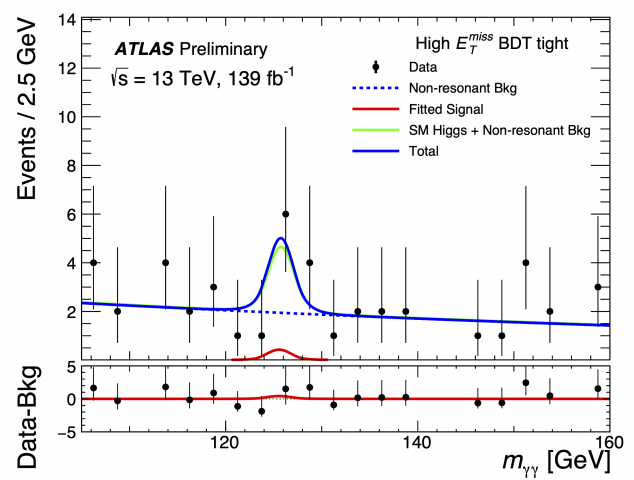Access to Collaboration Site and Physics Results

ATLAS highlights from LHCP
– The fifth annual Large Hadron Collider Physics (LHCP2017) conference was held this week at Shanghai Jiao Tong University in a leafy suburb in the former French concession in Shanghai, China. This year there were more participants than ever before: 470 people from universities across the globe. ATLAS presented an interesting set of new results exploiting the high statistics of the combined 2015 and 2016 dataset.Read more →
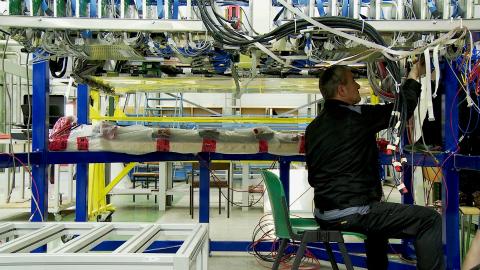
ATLAS at the starting line
– The start of the 2017 run marks the conclusion of a maintenance period known as the Extended Year-End-Technical-Stop (EYETS). This upkeep is vital for the health and well-being of the detector, ensuring that ATLAS can thrive for the months of high-intensity operation that follow.Read more →
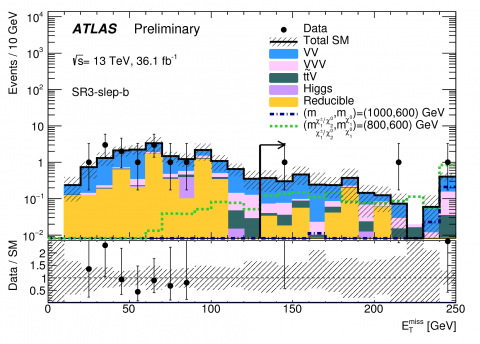
ATLAS releases new results in search for weakly-interacting supersymmetric particles
– Supersymmetry is an extension to the Standard Model that may explain the origin of dark matter and pave the way to a grand unified theory of nature. For each particle of the Standard Model, supersymmetry introduces an exotic new “super-partner,” which may be produced in proton-proton collisions. Searching for these particles is currently one of the top priorities of the LHC physics program. A discovery would transform our understanding of the building blocks of matter and the fundamental forces, leading to a paradigm shift in physics similar to when Einstein’s relativity superseded classical Newtonian physics in the early 20th century.Read more →

Hunting for the superpartner of the top quark
– Supersymmetry (SUSY) is one of the most attractive theories extending the Standard Model of particle physics. SUSY would provide a solution to several of the Standard Model’s unanswered questions, by more than doubling the number of elementary particles, giving each fermion a bosonic partner and vice versa. In many SUSY models the lightest supersymmetric particle (LSP) constitutes dark matter.Read more →

New ATLAS precision measurements of the Higgs Boson in the 'golden channel'
– With the huge amount of proton–proton collisions delivered by the LHC in 2015 and 2016 at the increased collision energy of 13 TeV, ATLAS has entered a new era of Higgs boson property measurements. The new data allowed ATLAS to perform measurements of inclusive and differential cross sections using the “golden” H->ZZ*->4l decay.Read more →
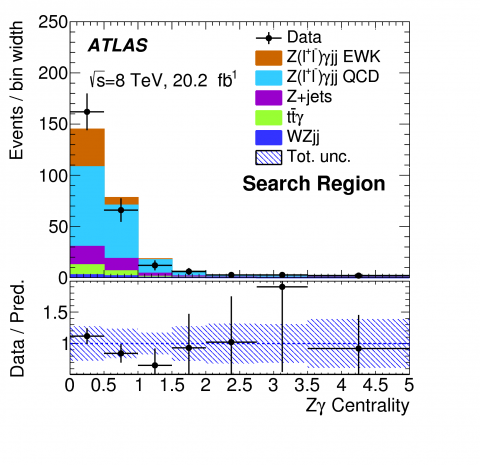
New insight into the Standard Model
– Ever since the LHC collided its first protons in 2009, the ATLAS Collaboration has been persistently studying their interactions with increasing precision. To this day, it has always observed them to be as expected by the Standard Model. Though it remains unrefuted, physicists are convinced that a better theory must exist to explain certain fundamental questions: What is the nature of the dark matter? Why is the gravitational force so weak compared to the other forces?Read more →

Making the most of the ATLAS detector
– Up to now, ATLAS has measured the energies and positions of jets using the finely segmented calorimeter system, in which both electrically charged and neutral particles interact. However, the inner detector tracking system provides more precise measurements of charged particle energies and positions. A recent ATLAS paper describes a particle flow algorithm that extrapolates the charged tracks seen by the inner detector to the calorimeter regions.Read more →
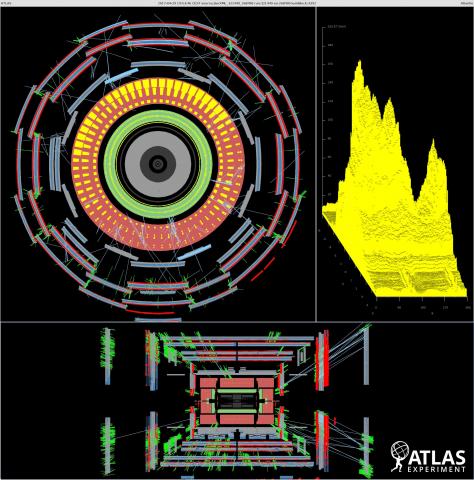
Beams return to the ATLAS Experiment
– With the year’s first proton beams now circulating in the Large Hadron Collider, physicists have today recorded “beam splashes” in the ATLAS experimentRead more →
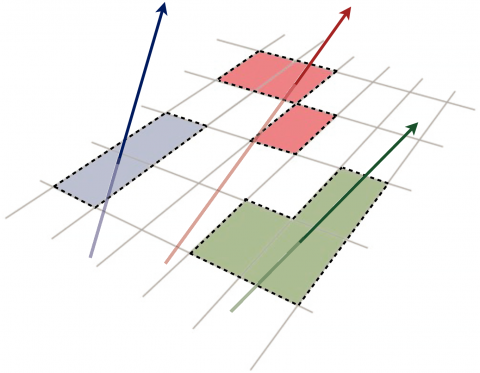
Charged-particle reconstruction at the energy frontier
– A new age of exploration dawned at the start of Run 2 of the Large Hadron Collider, as protons began colliding at the unprecedented centre-of-mass energy of 13 TeV. The ATLAS experiment now frequently observes highly collimated bundles of particles (known as jets) with energies of up to multiple TeV, as well as tau-leptons and b-hadrons that pass through the innermost detector layers before decaying. These energetic collisions are prime hunting grounds for signs of new physics, including massive, hypothetical new particles that would decay to much lighter – and therefore highly boosted – bosons.Read more →

Impressions from Moriond
– The 52nd Rencontres de Moriond conference was held in La Thuile, Italy, from the 18 March to 1 April. The first week, which ran until 25 March, was devoted to the theme "Electroweak interactions and unified theories", while the second week was based on the theme of “QCD and high energy interaction”.Read more →


